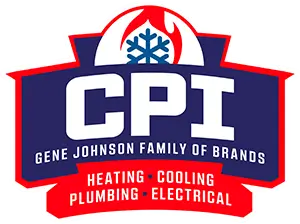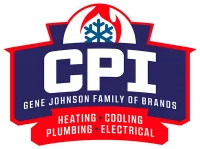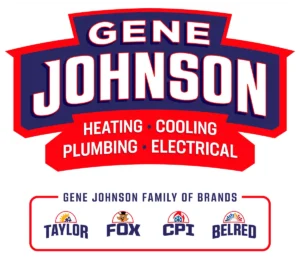Can a Water Softener Cause Water Pressure Problems?
Water is a vital resource in our daily lives, but sometimes, the systems we use to improve its quality can create unexpected challenges. One such example is the impact of water softeners on home water pressure. In this guide, we delve into the intricacies of how water softeners might affect your home’s water pressure.
From exploring the initial signs of pressure issues to diagnosing and resolving potential problems caused by water softeners, this article provides a thorough overview. We’ll guide you through various steps and considerations to help you determine if your water softener is the reason behind low water pressure and offer practical solutions and maintenance tips.
Additionally, we address frequently asked questions, providing you with the knowledge and tools to ensure your water softening system works efficiently without compromising your home’s water pressure.
How to Determine if Your Water Softener is Causing Low Water Pressure
Encountering low water pressure can be quite bothersome, so it’s crucial to determine whether your water softener is the root cause of this issue. Here’s a step-by-step guide to help you determine this:
Check Other Water Sources: First, test other faucets in your home. When the low pressure is confined to a specific area, it may not necessarily be attributed to the water softener as the underlying cause. If the problem is widespread, then proceed to the next step.
Use the Bypass Valve: Find the bypass valve on your water softener, typically identified as a lever or knob on the unit. Move it into bypass mode, enabling water to circulate throughout your home without traversing the softener. After doing this, check your water pressure. If there’s an improvement, your water softener is likely the cause.
Inspect for Salt Bridges: Sometimes, a crusty build-up known as a salt bridge forms in the brine tank of the softener, which can hinder its performance. Carefully check for any hard crust on the top layer of the salt. If present, gently break it up.
Look for Blockages: Resin beads from the softener can sometimes get lodged in the lines, causing blockages and reducing pressure. Inspect any accessible filters or screens for signs of resin bead accumulation.
Evaluate the Age and Maintenance History: Consider the age of your water softener and how regularly it’s been serviced. Older units or those that have received insufficient maintenance are more prone to causing problems.
Check for Leaks: Inspect the vicinity of the water softener for any indications of leaks. A leak within the system can lead to reduced water pressure and must be dealt with promptly.
Consult a Professional: If you’ve gone through these steps and are still unsure, or if you’ve identified the softener as the problem but are unsure how to fix it, it’s best to call in a professional. A plumber or water treatment expert can provide a more in-depth analysis and solution.
By following these steps, you can more accurately identify whether your water softener is the cause of your low water pressure woes. Keep in mind that performing regular maintenance and addressing issues promptly can help maintain the optimal functionality of your water softening system.
Why Your Water Softener Might Be the Culprit
Once you’ve conducted the initial checks and suspect that your water softener might be impacting your home’s water pressure, it’s important to understand why this could be happening. Here are some key reasons that explain how a water softener could potentially be the cause of reduced water pressure:
Incorrect Sizing: If your water softener is not adequately sized for your household’s water usage, it can struggle to keep up, resulting in lowered water pressure. It’s crucial to have a unit that matches your home’s water demand.
Resin Bed Issues: Over time, the resin bed in your water softener, which is responsible for softening hard water, may become less efficient. If it gets clogged with minerals or other debris, it can restrict water flow, leading to pressure issues.
Mechanical Failures: Water softeners are complex systems with various components, like valves and controllers. Mechanical failures within these components can result in decreased water pressure. Regular wear and tear or a malfunction can impede the system’s ability to process water efficiently.
High Water Hardness Level: In areas with extremely hard water, the softener has to work harder and more frequently to soften the water, which can overburden the system and potentially affect water pressure.
Sediment Build-Up: Sediment build-up in the brine tank or pipes connected to the water softener can obstruct water flow. This sediment can come from your water supply and accumulate over time.
Backwash Frequency: The backwash cycle in water softeners, which cleans the resin bed, can sometimes affect water pressure, especially if the cycles are not functioning properly or are set too frequently.
Understanding these potential causes can assist you in identifying the precise problem with your water softener. It’s a good idea to regularly maintain your water softening system and consult with professionals for periodic check-ups. Addressing these issues not only helps in resolving the water pressure problem but also extends the lifespan of your water softener, ensuring it works effectively for years to come.
How to Fix Water Softener Causing Low Water Pressure
If you’ve pinpointed your water softener as the cause of low water pressure in your home, there are several DIY steps you can take to address the issue. However, remember that while these tips can be helpful, seeking professional assistance is often the best approach to ensure the problem is resolved correctly and safely.
Adjusting the Sizing: If your water softener proves insufficient for your home, contemplate upgrading to a larger unit. Seeking professional guidance may be necessary to determine the suitable size, taking into account your household’s water consumption.
Cleaning the Resin Bed: Regularly cleaning the resin bed can prevent clogs and maintain water flow. You have the option to utilize a resin bed cleaner readily accessible at many home improvement stores. Follow the instructions carefully, usually involving pouring the cleaner into the brine tank and initiating a regeneration cycle.
Checking and Cleaning Filters: Inspect and clean any pre-filters or screens. This is a relatively straightforward process: turn off the water supply, remove the filters, and rinse them under running water to remove debris.
Salt Bridge Removal: In case a salt bridge forms within the brine tank, take care to gently break it apart. Use a long-handled tool to gently push down on the crust to break it apart, but be cautious not to damage the tank.
Resetting the Regeneration Cycle: If the regeneration cycle is too frequent or not frequent enough, it can affect water pressure. Refer to your user manual to adjust the settings, ensuring they align with your water usage.
Inspecting for Leaks and Blockages: Check for any leaks in and around the water softener. Additionally, inspect the pipes leading to and from the unit for any apparent blockages.
If after trying these steps you still experience low water pressure, or if you are not comfortable performing these tasks yourself, it is highly recommended to call in a professional. A skilled technician can provide a more thorough inspection, identify the root cause, and perform the necessary repairs or adjustments.
Professional servicing ensures that your water softener not only runs efficiently but also helps in preventing future issues. Remember, regular maintenance by a professional can extend the life of your water softener and keep it functioning at its best.
Frequently Asked Questions (FAQ)
Can my water softener reduce my water pressure and flow rate?
Yes, a water softener can reduce your water pressure and flow rate. This typically happens when the softener is incorrectly sized for your home, the resin bed becomes clogged, or if there are mechanical issues within the softener. When the softener cannot process water efficiently due to these issues, it leads to a decrease in the rate at which water flows through your pipes, subsequently reducing the water pressure.
How can I know if my water softener is causing low water pressure?
To ascertain whether your water softener is the culprit behind low water pressure, begin by examining other faucets in your home for similar problems. If you observe low pressure throughout, consider utilizing the bypass valve on your water softener. This diverts water away from the softener. If water pressure improves when the softener is bypassed, it’s likely the cause. Also, check for salt bridges, resin bed clogs, or leaks around the softener, which can contribute to pressure issues.
What are the first steps to take if I suspect my water softener is affecting water pressure?
If you suspect your water softener is affecting water pressure, begin by testing other water outlets in your home to see if the issue is isolated or widespread. Next, engage the bypass valve on your water softener to direct water away from it. After doing this, observe if there’s an improvement in water pressure. This helps identify if the problem is with the softener or elsewhere. Additionally, inspect for salt bridges in the brine tank and check the resin bed and filters for clogs or blockages.
How do I increase water pressure after water softener installation?
To boost water pressure following the installation of a water softener, it’s crucial to verify that the unit is appropriately sized to accommodate your household’s water consumption. If the size is adequate, check for any salt bridges in the brine tank or clogs in the resin bed, as these can restrict water flow. Adjusting the regeneration cycle frequency may also help. If these steps don’t improve pressure, inspect for any kinks or blockages in the pipes leading to and from the softener. If the problem persists, it’s advisable to seek the expertise of a professional, as it may be necessary to reevaluate the installation itself.
How can you tell if your water softener is clogged?
Signs that your water softener is clogged include a noticeable decrease in water pressure, changes in water quality (like hardness), or the system regenerating more frequently than normal. To check for clogs, inspect the resin bed for any buildup of minerals or debris. Additionally, look for salt bridges in the brine tank, which can block the flow of water and salt. Checking and cleaning any filters or screens for blockages can also indicate if your water softener is clogged.
How often should I check for salt bridges and resin bead blockages in my water softener?
It’s recommended to check for salt bridges and resin bead blockages in your water softener every 2-3 months, especially in areas with hard water. Regular inspections gain greater significance when alterations in water quality or pressure become noticeable. During these inspections, look for hard crusty layers (salt bridges) on top of the salt in the brine tank and clear them. For resin bead blockages, examine filters and screens for any trapped beads. Regular maintenance like this helps prevent major clogs and keeps your water softener functioning effectively.
What are the signs that my water softener might be too small for my home?
If your water softener is too small, you may notice frequent regeneration cycles, as it struggles to keep up with your household’s water demand. This frequent regeneration can lead to inconsistent water pressure and an increase in salt usage. Another sign is hard water symptoms, such as scale buildup or dry skin, despite having a functioning softener. These issues arise because the softener doesn’t have the capacity to soften all the water coming into your home, indicating the need for a larger or more efficient model.
Can adjusting the regeneration cycle on my water softener affect water pressure?
Yes, adjusting the regeneration cycle of your water softener can impact water pressure. If the regeneration cycle is set too frequently, it may temporarily reduce water pressure during the cycle. Conversely, infrequent regeneration can lead to clogs in the resin bed, affecting water flow and pressure over time. It’s important to set the regeneration cycle according to your water usage and hardness level to ensure optimal performance of the softener without compromising on water pressure.
Is it possible for leaks in the water softener system to cause low water pressure?
Certainly, leaks within the water softener system have the potential to result in diminished water pressure. These leaks may manifest in different components of the system, including the pipes, valves, or the tank itself. These leaks not only waste water but also reduce the overall pressure in your home’s plumbing system. Indeed, if you observe damp areas, water accumulation around the softener, or unexpected spikes in your water bills, these signs could signify the presence of a leak. It is imperative to promptly resolve any leaks to uphold sufficient water pressure and prevent potential water-related damage.
What should the pressure be on a water softener?
The ideal pressure for a water softener typically ranges between 40 and 70 psi (pounds per square inch). This range ensures efficient operation without risking damage to the system. Operating at a pressure that’s too low may not allow for proper water flow through the softener, impacting its ability to effectively soften water. On the other hand, too high pressure can strain the system, potentially causing leaks or damage. It is essential to refer to your water softener’s manual for precise instructions and utilize a pressure gauge to conduct regular pressure checks.
What’s the maximum water pressure for my water softener?
The maximum water pressure for most residential water softeners is usually around 120 psi, but it’s essential to check the manufacturer’s specifications for your specific model. Exceeding this limit can lead to damage or failure of the softener. Elevated water pressure can place undue strain on the internal components, potentially resulting in leaks or system ruptures. If your home water pressure exceeds the recommended limit for your softener, you may need to install a pressure regulator to protect the softener and other appliances in your home.
Ensuring Optimal Water Flow with CPI Plumbing & Heating
As we wrap up our exploration into the intricate relationship between water softeners and home water pressure, it’s clear that vigilance and understanding are key. Addressing water pressure issues can seem daunting, but with the right approach and expertise, it’s a manageable task. This is where CPI Plumbing & Heating steps in. Our dedicated team of professionals is committed to ensuring that your water softening system enhances your home’s water flow rather than hinders it.
With our deep understanding of plumbing systems and customer-focused service, we’re here to troubleshoot, advise, and resolve any water pressure challenges you might face. We invite you to experience the CPI difference. Whether it’s fine-tuning your water softener, regular maintenance, or a comprehensive system overhaul, our experts are just a call away.
Trust us to bring harmony back to your home’s water system. Ready for a water pressure solution that lasts? Contact CPI Plumbing & Heating at (360) 822-9306 – Your partner in home comfort and efficiency.


